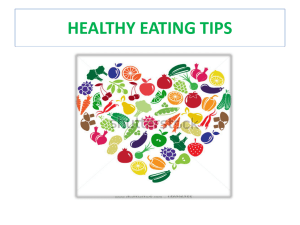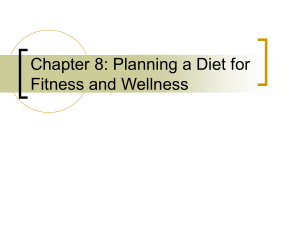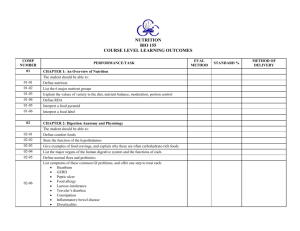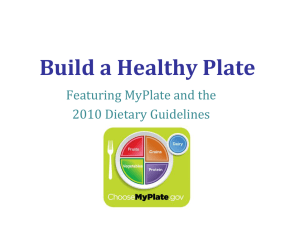Nutrition Awareness Addition Subtraction and Die
advertisement
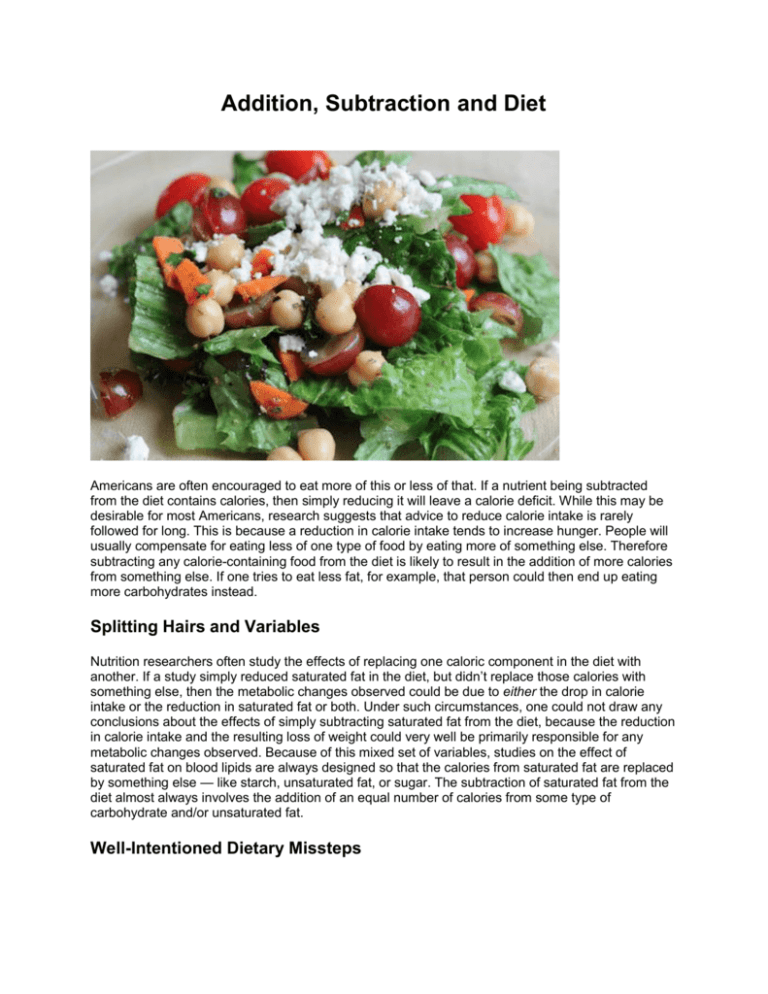
Addition, Subtraction and Diet Americans are often encouraged to eat more of this or less of that. If a nutrient being subtracted from the diet contains calories, then simply reducing it will leave a calorie deficit. While this may be desirable for most Americans, research suggests that advice to reduce calorie intake is rarely followed for long. This is because a reduction in calorie intake tends to increase hunger. People will usually compensate for eating less of one type of food by eating more of something else. Therefore subtracting any calorie-containing food from the diet is likely to result in the addition of more calories from something else. If one tries to eat less fat, for example, that person could then end up eating more carbohydrates instead. Splitting Hairs and Variables Nutrition researchers often study the effects of replacing one caloric component in the diet with another. If a study simply reduced saturated fat in the diet, but didn’t replace those calories with something else, then the metabolic changes observed could be due to either the drop in calorie intake or the reduction in saturated fat or both. Under such circumstances, one could not draw any conclusions about the effects of simply subtracting saturated fat from the diet, because the reduction in calorie intake and the resulting loss of weight could very well be primarily responsible for any metabolic changes observed. Because of this mixed set of variables, studies on the effect of saturated fat on blood lipids are always designed so that the calories from saturated fat are replaced by something else — like starch, unsaturated fat, or sugar. The subtraction of saturated fat from the diet almost always involves the addition of an equal number of calories from some type of carbohydrate and/or unsaturated fat. Well-Intentioned Dietary Missteps The American Heart Association, the National Cancer Institute, MyPlate, and the Dietary Guidelines for Americans all recommend limiting dietary fat, especially saturated fat. However, foods are never 100% saturated fat and only refined fats and oils contain only fat calories. It seemed likely that when the federal government and various health advocacy groups suggested that Americans eat less fat and saturated fat, they hoped Americans would replace fatty meats, desserts, and dairy products with more high-carbohydrate foods like fruits, vegetables, beans, and whole grains. Sadly, when these recommendations came to light, this is not what happened. Why? Americans were bombarded with ads for “fat-free” foods such as cookies, cakes, candies, chips, and nonfat frozen yogurt. Most of these widely advertised “low- fat” and “fat-free” foods contain little in the way of vitamins, minerals, fiber and phytochemicals. Instead, these manufactured foods are nearly devoid of valuable dietary components that would be found in a healthful diet that contains fruits, vegetables, beans, and whole grains. An In-Depth Look at Processed, Low-Fat Foods Many low-fat foods have even higher levels of salt and refined sugar than their higher fat alternatives. On an equal calorie basis, low-fat salad dressing, chips, and cheeses are almost always higher in salt. “Fat-free” cookies, cakes and muffins, are much higher in sugar than their higher fat counterparts. These “fat-free” foods do not have any more healthful elements than their higher-fat versions. They often have similar (high) calorie densities too. A lack of fiber and a high calorie density yields high-carbohydrate foods with far less satiety value than more natural highcarbohydrate foods. As a result, eating more of these highly refined and processed highcarbohydrate foods has certainly not helped overweight Americans lose excess body fat. Americans are actually getting fatter on a lower-fat diet. Now there seems to be a growing interest in higher fat foods and a lot of research suggesting that Americans might be better off adding monounsaturated fat. But this is not true. Back in the 1980s it was clearly demonstrated that people eat more calories and gain weight when fat is added to foods. We now know that this is because the added fat increases the calorie density and lowers the satiety value of the food. It is becoming increasingly clear that simplistic advice about the adding or subtracting of fat or carbohydrate is of little value. Foods with a lot of saturated fat or hydrogenated fat raise LDL levels and pro- mote cardiovascular disease, obesity, and diabetes. Foods high in sugar and/or refined flour also promote obesity and diabetes. Foods high in refined carbohydrates may be even more calorie dense and contain far lower levels of most vitamins and minerals than some higher-fat foods like fish, avocados, tofu, meat, and milk. As such, they promote obesity and diabetes which increase the risk of cardiovascular disease. Get Back on Track! Americans need to be encouraged to add more fruits, vegetables, whole grains, beans, fish and nonfat dairy to their diet, while subtracting foods high in salt, saturated fat, hydrogenated fat and/or refined carbohydrates. This would result in much higher nutrient, fiber, and phytochemical content than the typical American diet. This approach lowers calorie density and increases satiety value. When these foods are added and the foods high in unhealthy fats and/or refined carbohydrates are subtracted, calorie intake falls, arteries don’t clog up, and people lose weight, keeping it off without much hunger. Plus, the death rate for heart attacks, strokes, cancer and diabetes will fall. So what are you waiting for? Follow MyPlate‘s advice and fill half your plate with fruits and veggies at each meal! By Dr. James J. Kenney, PhD, RD, FACN.
